The Great War began in Europe in 1914, and by its end in 1918, 4.7 million Americans would serve in the conflict. More than 100,000 American men and women would lose their lives. The National Parks Service has several parks in its system that have connections to the Great War. Here are some of the World War 1 National Park Sites currently established.
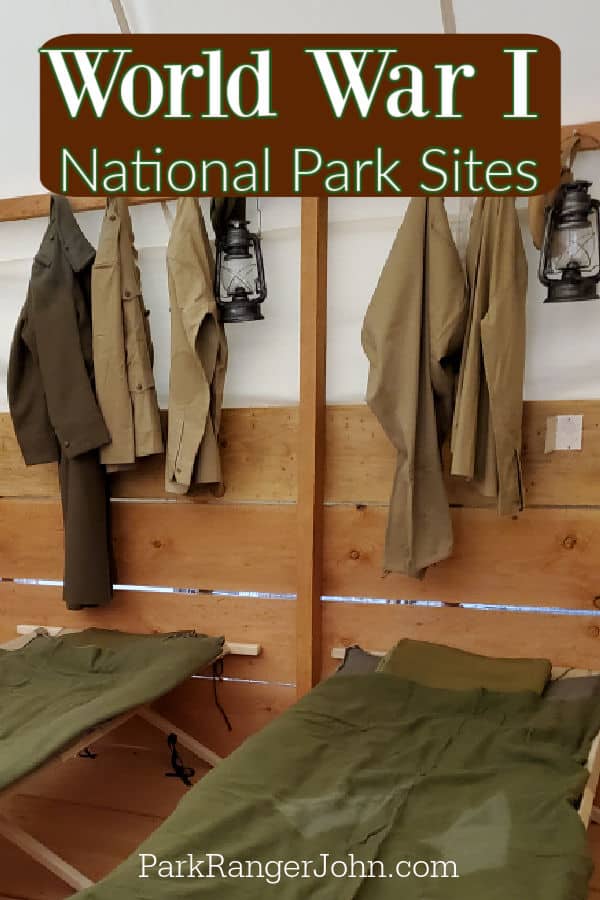
TL;DR Don’t have time to read the full article? Here are my top finds:
🏨Hotels and Vacation Rentals
📍Tours
🐻 Save time! Buy your National Park Pass before your trip
World War 1 National Park Sites
The Great War began in 1914 when the heir to Austro- Hungarian Empire was shot and killed in Bosnia. The assassination was a catalyst that plunged Europe into an all-consuming war. Over 30 countries became involved in the Great War between 1914 and 1918.
America remained neutral for the first years of the war and did not become involved in the Great War until 1917. American President Woodrow Wilson felt he had no option but to join the Allied Powers in 1917.
The National Park Service was created in 1916, mere months before America declared war on Germany and its allies. The National Parks Service has under its management several sites that tell the story of American involvement in the First World War.
The Start of the First World War
The First World War began on July 28th, 1914, one month after the assassination of the heir to the Austro- Hungarian Empire, Archduke Franz Ferdinand, and his wife. In the years leading up to the archduke's assassination, political instability had increased in the European Balkans.
The pair were killed by a radical Serbian Nationalist, in protest over the Austro-Hungarian rule of the region. The Austro-Hungarian government wanted to use the assassination of the archduke as a way to assert further control.
The Russian Empire supported the Serbians, while another powerful nation, Germany, supported Austria-Hungary. Austria-Hungary waited until Kaiser Wilhelm II formally declared his support before declaring war.
Soon war broke out on the European continent between a group of nations known as the Central Powers and the Allied Powers. The Central Powers were Germany, Austria-Hungary, the Ottoman Empire (Turkey), and Bulgaria. The Allied Powers initially consisted of Russia, France, Great Britain, Serbia, and Italy.
The Central Powers attacked two fronts, the east, and the west. In the west, the Germans sent armies into Belgium and France. To the east, Russia sent troops into German territory.
World War I was fought in trenches that stretched across Europe. During the war, trenches were dug to protect the soldiers from heavy artillery fire and newly developed chemical weapons used by Germany. The horrors of trench warfare experienced in the Great War have been well documented.
American Involvement in World War I
The American president at the onset of the Great War was Woodrow Wilson. Wilson served as the 28th President of America from 1913 until 1921.
Wilson was reluctant to involve the American people in a war in Europe; some Americans volunteered to fight on their own accord in 1914. America remained neutral in the first year of the war, continuing to trade with countries of the Central and Allied powers.
Wilson felt that America was under no threat from war across the sea. America felt the oceans that surrounded it offered enough protection. In 1915 the war in Europe affected the families of 128 Americans. They were killed in a torpedo attack on the British ocean liner, the Lusitania. 2,000 people died when the Lusitania sank.
German submarines had been targeting ships in the seas around Europe, many of which were unarmed civilian liners and merchant's vessels. Woodrow Wilson continued with his policy of noninvolvement until 1917. In January 1917, Wilson received word that Germany was offering to help Mexico retake the territory it had lost to America in 1848.
In 1917 Germany had also resumed unrestricted submarine operations in the waters around Europe, meaning any vessel was once again a target. Wilson asked congress for a declaration of war on Germany, and America officially entered World War I on the side of the Allies on April 6th, 1917.
America Joins the War
These parks tell the story of how America prepared to join the Allies in Europe once Woodrow Wilson and the United States Congress declared war on Germany.
Thirty-two training camps or cantonments sprung up across the nation. Many of the camps were built on land protected by the newly established National Parks Service.
World War I National Parks
The National Parks Service has in its service 423 parks. Many of these parks have surprising connections to World War I, such as Longfellow House Washington's Headquarters National Historic Site. The Granddaughter of Henry Longfellow went to France in 1917 to teach French orphans.
When America entered the war, Russia had removed itself from the fight to focus on issues at home. The Allies were exhausted, running low on ammunition and men. The trench warfare that characterized World War I achieved little more than inflicting mass casualties and deaths.
America provided the Allies with much-needed reinforcements and resources. With the help of American boots on the ground, the Allies pushed back Germany and the Central Powers from the Western Front.
The First World War was the first modern global conflict. When America entered the war, it did not have a large standing army. It took a year to build a formidable force to send to Europe. Many National Parks served as training grounds and barracks for the U.S Armed Forces.
The National Parks explored below tell the story of the American Nation at war.
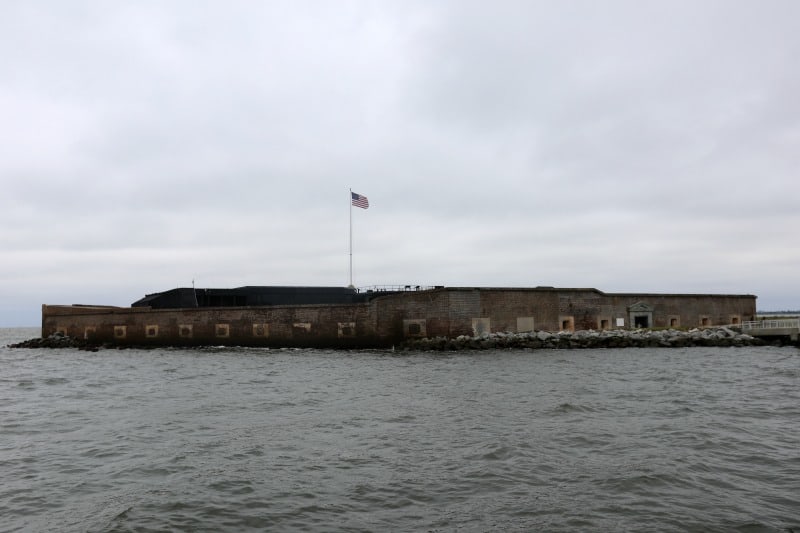
Fort Sumter and Fort Moultrie National Historical Park
Fort Sumter and Fort Moultrie National Historical Park in South Carolina have witnessed many watershed moments since their construction. The forts, known as the ‘guardians of Charleston harbor,’ were the scene of attempted sabotage by the Germans.
On January 31st, 1917, a German ship sank in the Cooper River. The Liebenfels, was sunk by her German crew, 8 of whom were convicted for their role in the incident. The Leibenfels were raised from the Riverbed by the U.S Navy and refurbished. The Liebenfels became the U.S.S Huston.
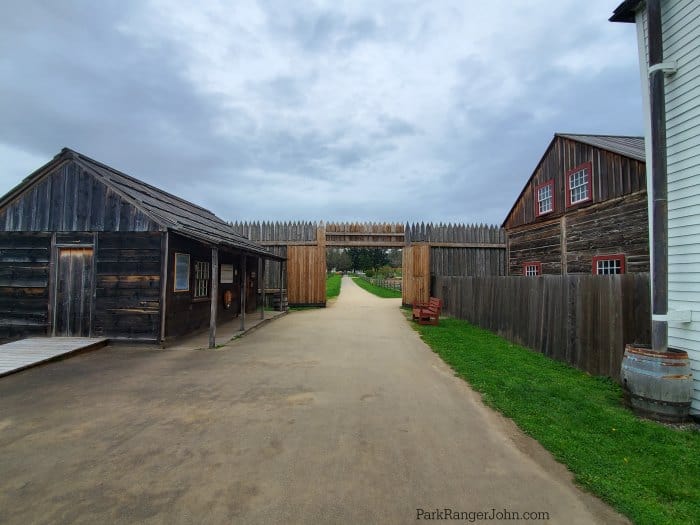
Fort Vancouver National Historic Site
Fort Vancouver National Historic Site encompasses four sites in Washington and Oregon. The park is home to many fascinating places from the Pacific Northwest’s history.
Fort Vancouver National Historic Site preserves the Hudson Bay Companies fur trading outpost and is home to the oldest continuously operating airfield.
Fort Vancouver also houses barracks that have been used by U.S. forces since 1849. The Vancouver Barracks played a critical role when America entered the war in 1917.
The barracks housed the U.S. Spruce Production Division. This newly developed division operated the largest lumber mill in the world, supplying lumber for the construction of Allied aircraft.
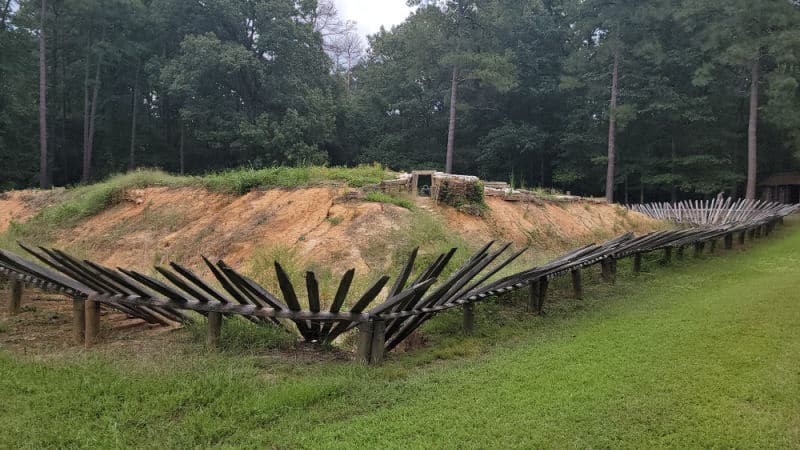
Petersburg National Battlefield
Petersburg National Battlefield in Virginia is where during the Civil War, the Confederate city of Petersburg came under siege from the Union. The Siege of Petersburg occurred from June 9th, 1864, until March 25th, 1865.
For nine months, the Confederates and the Union engaged in trench warfare.
The trenches dug by the Union and Confederate armies were the most complex and sophisticated system of earthworks. A training camp was built nearby, when America entered World War I. 60,000 soldiers were trained in trench warfare at Camp Lee.
The men at Camp Lee built a series of trenches to simulate conditions on the Western Front. These trenches extended to the National Battlefield at Petersburg, linking those who had fought there in the last days of the Civil War, with those about to be deployed.
The soldiers who trained at Camp Lee found themselves in Flanders Fields in France. Divisions from Camp Lee also fought in the Meuse-Argonne Offensive that effectively ended World War I.
The trenches constructed by the soldiers at Camp Lee are the most intact World War I era American trench system to have survived.
Hopewell Culture National Historical Park
Hopewell Culture National Historical Park in Ohio consists of six sites. The park is home to ceremonial mounds and earthworks constructed by the Hopewell culture indigenous community who lived in the area from 200 BC to 500 AD.
In 1917, Hopewell Culture National Park became home to Camp Sherman. Camp Sherman was the largest training camp built during the Great War and trained hundreds of thousands of Americans.
More than 100,000 soldiers trained at Camp Sherman. The first soldiers arrived in Europe in June 1918, a year after America had declared war on Germany.
The U.S Soldiers were not the only residents of the camp. German prisoners of war from Europe were held at Camp Sherman from 1918 until 1919.
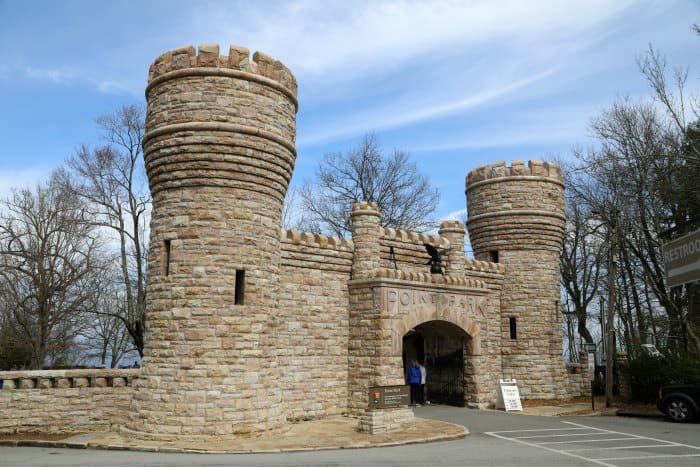
Chickamauga and Chattanooga National Military Park
The Chickamauga and Chattanooga National Military Park in Tennessee and Georgia was under the management of the U.S War Department. The Civil War battlefield of Chickamauga became a training ground for newly drafted soldiers.
The Chickamauga battlefield was turned into three training camps by the U.S. Army. The camps were Camp Greenleaf, Camp Forrest, and Camp Warden McLean.
Camp Warden McLean was a training center for reserve officers, and Camp Forrest was a small camp for engineer training. Camp Greenleaf was the largest camp established for training medical personnel.
The ground where many soldiers died during the Civil War, was used to train those who would save lives. Doctors, nurses, ambulance staff, and field hospital teams trained at the Military Park.
The army built buildings and trenches on the Chickamauga Battlefield, all of which were dismantled when the war ended. Chickamauga and Chattanooga National Military Park was transferred to the National Park Service in the 1930s.
Gettysburg National Military Park
Gettysburg National Military Park in Pennsylvania was the scene of Abraham Lincoln's famous Gettysburg Address and the Civil War Battle of Gettysburg. Gettysburg, like many battlegrounds from the Civil War, was used as a training camp during World War I.
The Gettysburg National Military Park was a U.S Army training ground for Infantry. Much of the battlefield was used, including the site of ‘Pickett's Charge.’ Gettysburg was also home to Camp Colt, where soldiers were taught how to operate tanks, the only one of its kind. Camp Colt was under the command of Captain Dwight ‘Ike’ Eisenhower.
Eisenhower would become the 34th president of the United States of America. The Eisenhower National Historic Site is next to Gettysburg National Military Park.
Harpers Ferry National Historical Park
Harpers Ferry National Historical Park in West Virginia has been at the center of many conflicts. Harpers Ferry has witnessed several significant moments in American history.
Harpers Ferry is home to Storer College. The college was opened in 1867 and provided a collegiate education to African Americans. During World War I, 104 current and former students of the college enlisted.
The college president asked the 104 soldiers to document their time in the U.S Armed Forces. This was during a time of open hostility to African Americans. Two of the 104 soldiers served on the front lines of the war in Europe during the Meuse-Argonne Offensive. The college closed its doors in 1955 and is now part of the National Park.
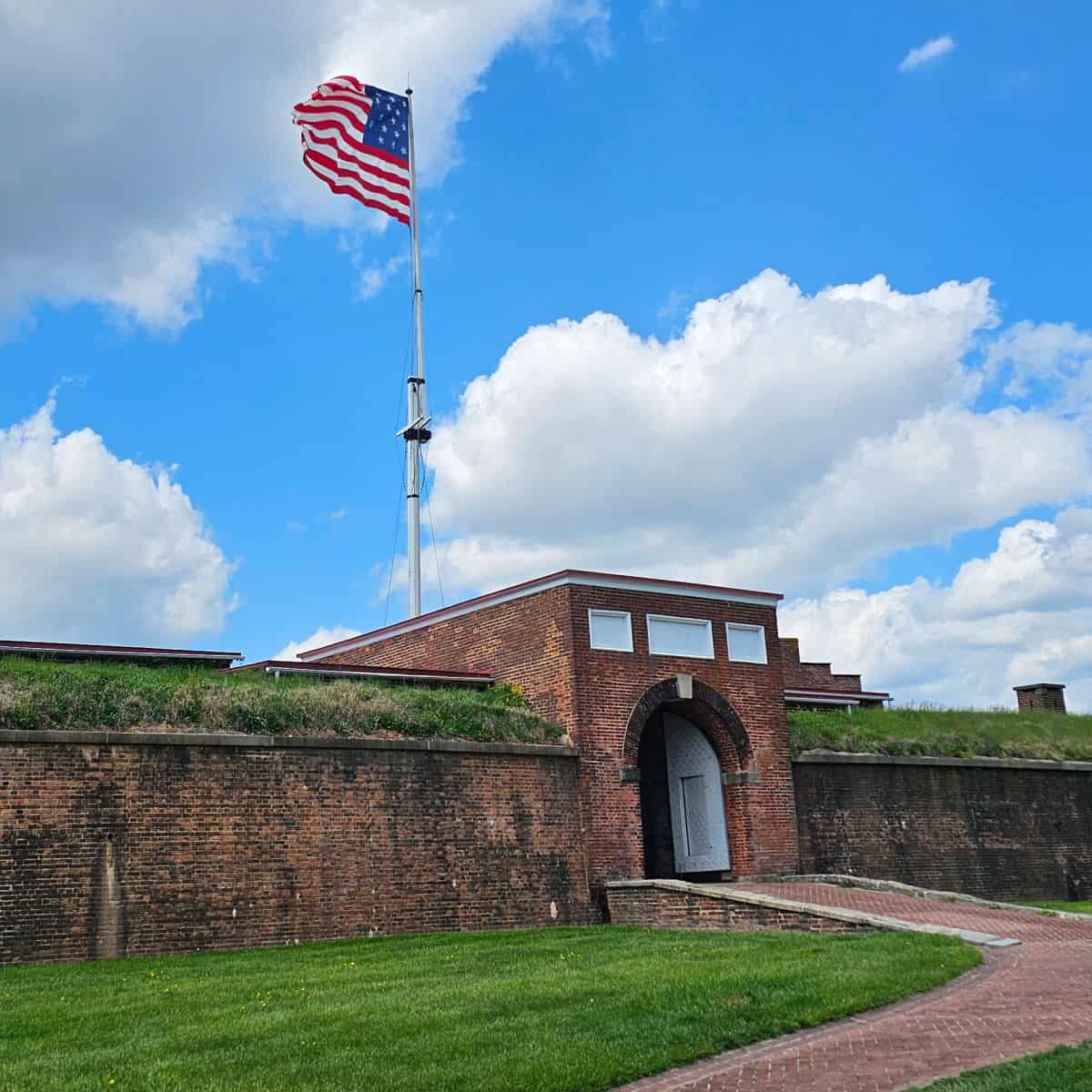
Fort McHenry National Monument & Shrine
The Fort McHenry National Monument & Shrine in Baltimore, Maryland, was one of the nation's largest hospitals during World War I. Weapon advancements during the Great War meant changes to medical care had to be made.
Chemical weapons were used for the first time, and advances in heavy artillery and machine guns led to men being wounded in new ways.
Many of the wounds occurred in the face because the body was protected by the trenches. Shell shock, or post-traumatic stress disorder, was a common problem among soldiers returning from the trenches of Europe.
Fort McHenry National Monument & Shrine was the site of several medical advancements in patient care during World War I.
The American War Effort
When America declared war on Germany in 1917, the American people mobilized almost immediately. Men left their jobs to sign up to go and fight the enemy in Europe. In response, women left the home to pick up the plow or the wrench left behind by the men. Artists turned their attention to helping the American Armed Forces to stay hidden from the enemy.
Many sites that were key to the American war effort during the Great War are under the care of the National Parks Service.
Keweenaw National Historical Park
Keweenaw National Historical Park in Michigan is a site where copper has been mined for 7,000 years. The Great War increased the demand for copper dramatically because copper was used in almost every aspect of the military. From weapons to vehicles to battlefield equipment, copper was used.
The copper mine in the Keweenaw region was one of America’s biggest exports. Germany had used copper from the Keweenaw region for its submarines. Export of copper to Germany stopped in 1914 with the outbreak of the Great War.
Keweenaw copper played a vital role in the militaries of both the Central and Allied powers during World War I. Keweenaw not only supplied the copper that was used to fight the war but soldiers too. The story of the American soldiers who were trained at Keweenaw is told at the Keweenaw National Historical Park.
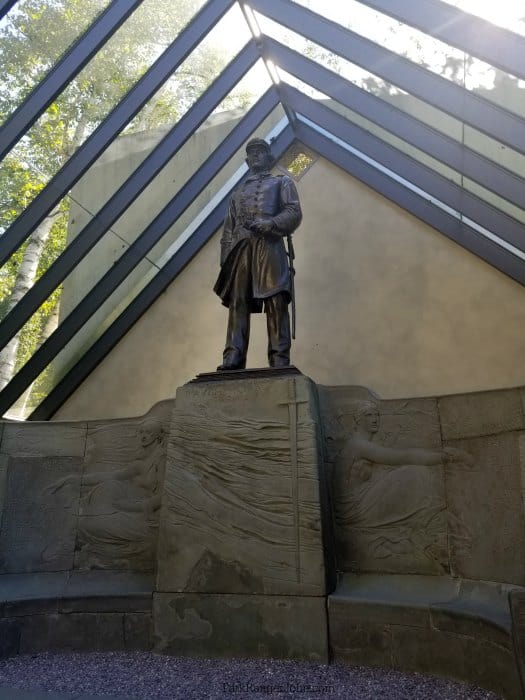
Saint-Gaudens National Historical Park
The Saint-Gaudens National Historic Site in New Hampshire is the historic home of one of America’s greatest sculptures, Augustus Saint-Gaudens.
Members of the Cornish Art Colony, led by Saint-Gaudens until he died in 1907, lent their artistic talents to the war effort. The artists, including Saint-Gaudens' son, contributed to the development of military camouflage in World War I and beyond.
Dayton Aviation Heritage National Historical Park
Dayton Aviation Heritage National Historical Park in Ohio is known as the birthplace of aviation. It was here that the Wright brothers executed the first successful airplane flight in 1903.
The Great War was a time of tremendous technological advancement. One area in particular that developed rapidly was aviation.
Before the Great War, there was little demand or need for airplanes in the United States. Air Forces were small units that were not integrated fully into the Armed Forces. The United States Military had six planes at the beginning of the Great War, and 14 pilots.
The need for military aircraft increased when America entered the war, a need that the country lacked the industry to meet.
The Dayton Aviation Heritage National Historical Park was used as a factory to build copies of the British DH-4 military aircraft. The planes reached Europe just before the end of the war.
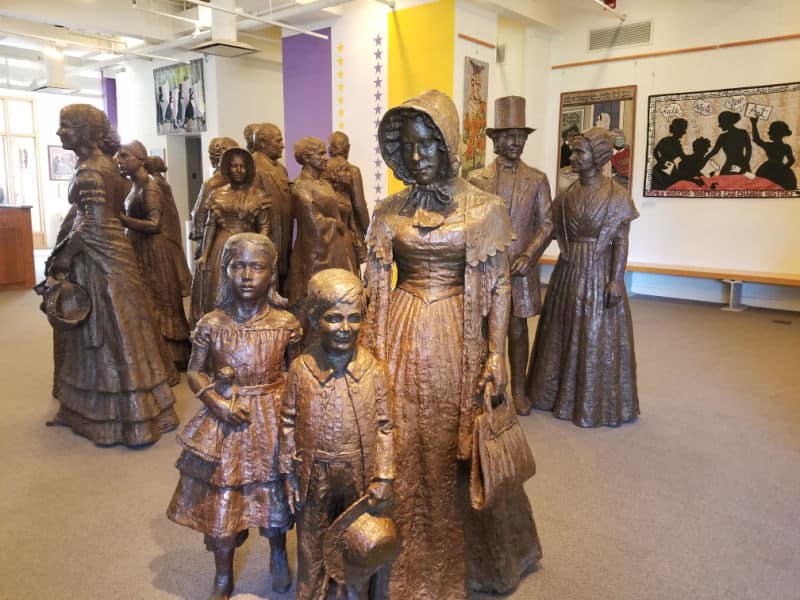
Women in World War I
When America entered the Great War, it was not just the nation's men who mobilized, nine million women from across America headed the call. Women replaced the millions of men who left their jobs to go and fight in Europe. Eight million of the women who volunteered did so with the Red Cross.
The women's suffrage movement was gaining momentum in 1917 when America entered World War I. Many felt it was unfair for women to be excluded from voting when they were contributing to the war effort and society.
Many believed women would be granted the right to vote soon. The suffragettes saw the women of the nation's contribution to the war effort and the American economy as a way to further their cause.
Women not only served their country at home, with many joining the men on the European front as Red Cross nurses.
The National Parks Service interprets the history of the Suffragette movement and American women at war at the Women's Rights National Historical Park in New York and the Belmont-Paul Women's Equality National Monument in the District of Columbia.
Defending America
America had developed a complex system of coastal defenses in the mid-1800s known as Third System Fortifications for their design. Many original fortifications received a modern update during the Taft Era from 1907. 42 coastal forts made up this intricate system of defense.
The Coast Guard was established under the command of the U.S Navy to protect American vessels and shores in 1915.
Boston National Historical Park
The Boston National Historical Park encompasses the Boston Navy Yard. When Europe went to war in 1914, American President Woodrow Wilson tasked the U.S Navy with protecting American trade ships and interests both at sea and at home. To do this, destroyers were stationed at Boston Navy Yard.
Throughout the Great War, Boston Navy Yard produced and repaired U.S Naval ships. When America officially declared war on Germany in April 1917, a fleet of six Destroyers stationed at Boston Navy Yard immediately prepared to deploy. Boston Navy Yard became one of the main ports utilized by the U.S Armed Forces during the Great War.
Gateway National Recreation Area
Gateway National Recreation Area has sites in New Jersey and New York that formed part of the coastal defenses for America during the Great War. Fort Tilden and Rockaway Naval Air Station in Jacob Riis Park were key to protecting the New York Harbor during World War I.
Rockaway Naval Air Station was established in 1917 to be the base for military aircraft whose objective was to search the seas surrounding the New York Harbor for German U-Boats. The Air Station was home to seaplanes, blimps, and flying boats.
Fort Hancock, now part of the Gateway National Recreation area, played host to a training camp when America went to war in Europe. The fort had already been operational in 1917 with around 600 soldiers stationed there. By 1918 over 4,000 soldiers served at Fort Hancock.
Fire Island National Seashore
Fire Island National Seashore in New York was the scene of a German attack on July 19th, 1918.
The USS San Diego sank 10 miles off the coast of Fire Island National Seashore. German U-Boats had been prowling the coast of America since 1917. However, no U-Boat was in the area at the time of the attack.
It is believed that the sinking of the USS San Diego, was done so by a line of mines laid by the Germans.
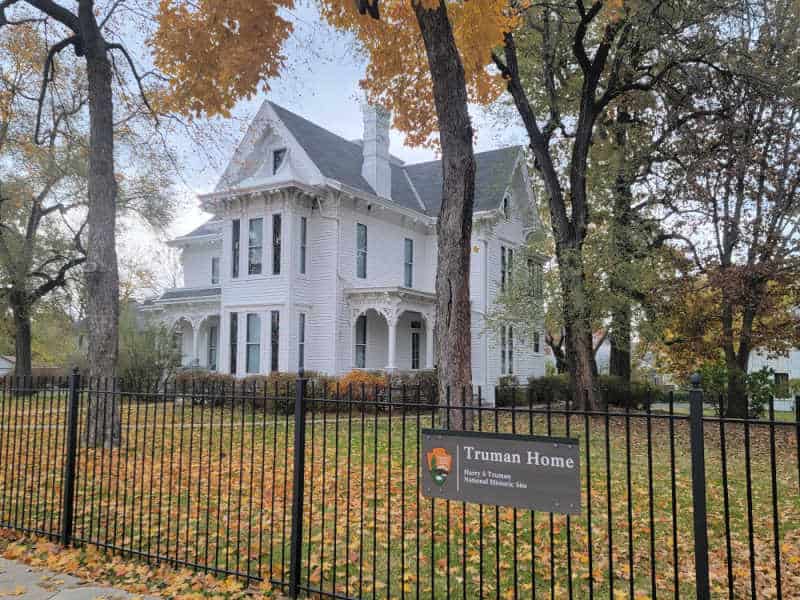
Harry S Truman National Historic Site
Harry S Truman was the 33rd President of America. Truman is the only U.S President to have fought in World War I. Harry Truman enlisted in the U.S Army in 1917. In 1918 he was made the captain in command of Battery D. Truman led Battery D through terrible conditions in Europe, and fierce battles
The Harry S. Truman National Historic Site in Independence Missouri preserves Truman's home. The site explains how Harry Truman earned his reputation as a strong leader.
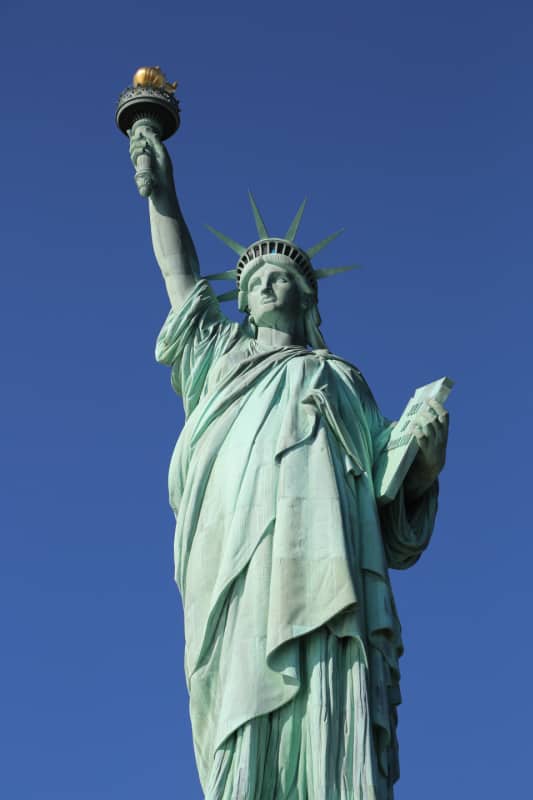
Statue of Liberty National Monument
The Statue of Liberty National Monument is one of the most iconic monuments in the world. For many American soldiers leaving America to join the fight in Europe, the Statue of Liberty in New York Harbor was their final view of home. The moment was captured by a military photographer and later turned into a postcard titled “Their last glimpse of Old New York.”
The Statue of Liberty was damaged during World War I when an ammunition depot on Black Tom Island was blown up. In the park is Ellis Island, the immigration station where one million immigrants passed annually before the war. Several buildings on Ellis Island were damaged by the blast.
The Statue of Liberty and all that she represents were used by the U.S Army to sell war bonds and recruit soldiers.
Cape Cod National Seashore
On July 21, 1918, a German submarine attacked a tugboat and four barges off the coast of Cape Cod by the town of Orleans. When the attack began the Coast Guard, and Naval Air Station quickly sprang into action.
The Coast Guard went out in a lifeboat to rescue those under attack, and the Naval Air Station sent a flying boat to assist. Twenty shells were fired at the tugboat and its barges. Some of which landed on the nearby beach. The residents of Cape Cod watched in anger as the tugboat went up in flames.
How America Remembers
The horrors of trench warfare experienced in World War I have inspired many works of art. Books, and poems such as "All Quiet on the Western Front,” a novel by Erich Maria Remarque, and “Into Battle,” by Captain Julian Grenfell are perhaps most well-known.
The National Park Service has several memorials in its care dedicated to the people who fought in the Great War. The graves of World War I soldiers can be visited at the iconic Saint Paul's Church in New York and Arlington National Cemetery in Virginia.
More recently, the World War I Memorial was opened, dedicated to the 4.6 million Americans who served in the Great War.
Charles Young Buffalo Soldiers National Monument
The African American soldiers known as Buffalo Soldiers served in the American Armed Forces during the American Civil War and every war after that. It was the 10th Cavalry fighting in the Frontier Wars that earned the nickname ‘Buffalo Soldiers.’
The Charles Young Buffalo Soldiers National Monument in Ohio preserves the home of the first African American Superintendent of a National Park. Charles Young was a military hero who fought during the American Civil War.
The Buffalo Soldiers served in the U.S Army and were some of the first people to care for America’s National Parks. The Charles Young Buffalo Soldiers National Monument interprets the history of the Buffalo Soldiers who served in World War I.
National Mall and Memorial Parks
The National Mall and Memorial Parks in the District of Columbia have several memorials to the men and women who fought to protect democracy during the Great War.
The District of Columbia War Memorial
Built in 1931, the memorial commemorates the 499 residents of the District of Columbia that died serving their country during the Great War.
General John J. Pershing Memorial in Pershing Park
General John J. Pershing led the American Expeditionary Forces who were the first U.S troops to arrive in Europe. General Pershing was awarded the highest possible rank in the U.S Army. Pershing has the title of General of the Armies for his bravery and victory during the Great War.
World War I Memorial
4.6 million American men and women served in the Great War. Over 116,000 Americans lost their lives. The World War I Memorial in Pershing Park was commissioned in 2021 to commemorate those who lost their lives and all those who served during World War I.
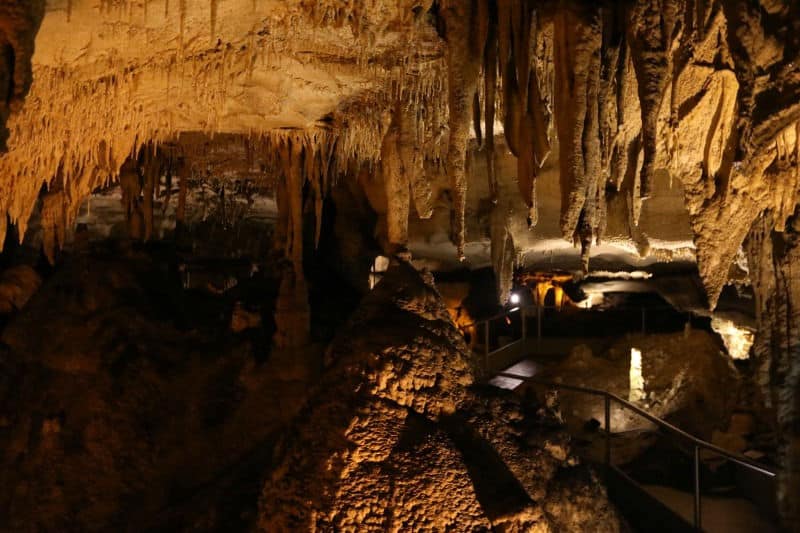
Mammoth Cave National Park
Mammoth Cave National Park in Kentucky has been a tourist destination since before the First World War. At the entrance to the cave are two Great War monuments. The monuments are dedicated to all those from Kentucky, and the rest of the United States who died. A list of names accompanies the monuments.
Presidents Park, White House
Presidents Park in the District of Columbia is home to two National memorials dedicated to the First and Second Divisions who fought in the Great War. The First Division Monument is dedicated to the members of the American Expeditionary Forces.
The Second Division Memorial honors the members of the Second Division who died in World War I. The memorial lists the places where the Second Division fought in Europe.
They shall grow not old, as we that are left grow old:
Age shall not weary them, nor the years condemn.
At the going down of the sun and in the morning
We will remember them.
- For the Fallen, Laurence Binyon.
Additional National Park Resources
Revolutionary War National Park Sites
World War II National Park Sites
Check out all of the National Parks in Washington DC
Check out all of the US National Memorials
Learn more about National Park Passes for parks that have an entrance fee.
$80.00 - For the America the Beautiful/National Park Pass. The pass covers entrance fees to all US National Park Sites and over 2,000 Federal Recreation Fee Sites for an entire year and covers everyone in the car for per-vehicle sites and up to 4 adults for per-person sites.

Buy your pass at this link, and REI will donate 10% of pass proceeds to the National Forest Foundation, National Park Foundation, and the U.S. Endowment for Forestry & Communities.
National Park Free Entrance Days -Mark your calendars with the free entrance days the National Park Service offers for US citizens and residents.
Make sure to follow Park Ranger John on Facebook, Instagram, Pinterest, and TikTok

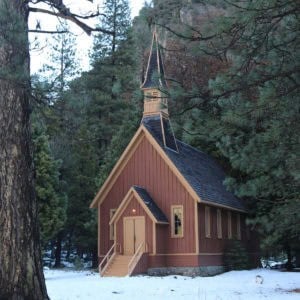
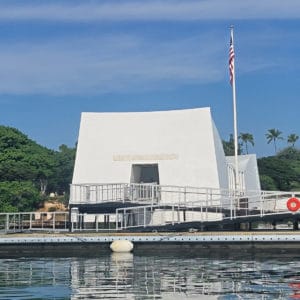
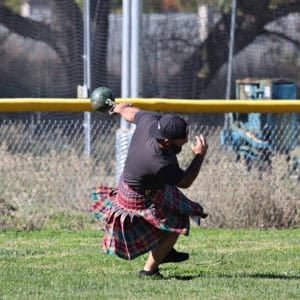

Leave a Reply